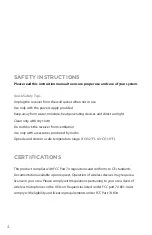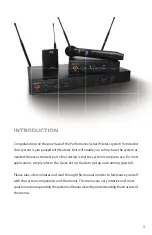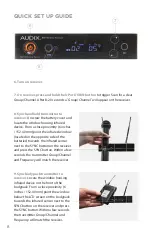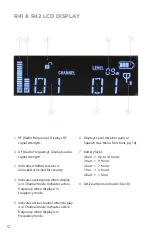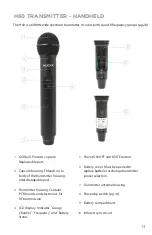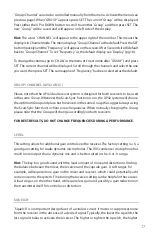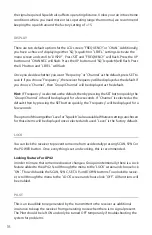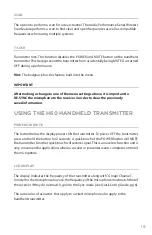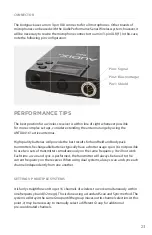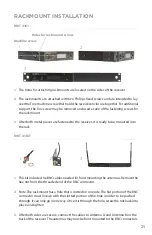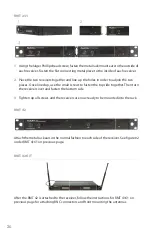
17
Group/Channel˝ can also be controlled manually from the menu. Activate the menu (see
previous page). When GROUP˝ appears, press SET. The current Group˝ will be displayed.
Press either the UP or DOWN button to scroll to another Group˝ and then press SET. The
new Group˝ will be saved and will appear on left side of the display.
Hint: The word CHANNEL˝ will appear to the upper right of the number. This means the
display is in Channel mode. The menu displays Group/Channel˝ as the default. Press the SET
button (quickly) and the Frequency˝ will appear on the screen. After 5 seconds it will default
back to Group/Channel˝. To set Frequency˝ as the default display see Display˝ (pg 18).
To change the channel, go to CHAN˝ in the menu (it’s next in line after GROUP˝) and press
SET. The current channel will be displayed. Scroll through the channels and select the one
you want, then press SET. The same applies if Frequency˝ has been selected as the default.
GROUP/CHANNEL (AP42 ONLY)
Please note that the AP42 dual receiver system is designed for both receivers to be used
in the same Group. Whenever the Scan-Sync function is run, the AP42 system will choose
the optimum Group and place both receivers in the same Group. We suggest always using
the Scan-Sync function to choose new frequencies. When manually changing the Group,
please note that the Group will change accordingly on both receivers.
FOR BEST RESULTS, DO NOT CHANGE FREQUENCIES DURING A PERFORMANCE.
LEVEL
This setting allows for additional gain control over the receiver. The factory setting is +6, a
good gain setting for Audix dynamic microphones. The VX5 condenser microphone has
much more output than a dynamic mic and is better suited in the -6 or -9 range.
Hint: The key to a good sound with the least amount of noise and distortion is finding
the balance between the mixer, the receiver and the capsule gain. A soft singer, for
example, will require more gain on the mixer and receiver, which could potentially add
some noise into the system. Fine tuning the receiver setting can be helpful in these cases.
A loud singer, on the other hand, will require less gain and possibly a gain reduction on
the transmitter itself for control over distortion.
SQUELCH
Squelch˝ is an important design facet of a wireless circuit. It mutes or suppresses noise
from the receiver in the absence of a desired signal. Typically, the lower the squelch, the
less signal it takes to activate the receiver. The higher or tighter the squelch, the higher
Summary of Contents for AP41 BP
Page 1: ...PERFORMANCE SERIES WIRELESS AP41 AP42 USER GUIDE ...
Page 2: ......


